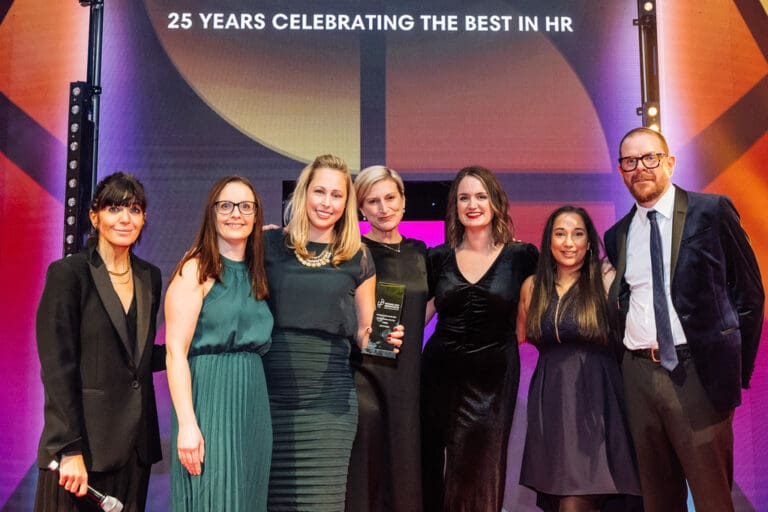Stephanie Bishop shares her tips for supporting young people during a time of crisis
Think back to the moment you finished your GCSEs or equivalents … or O-levels, for those of a slightly different vintage. Putting the lid back on the pen for the last time after your finals. A few hours of that sick feeling, while you re-hashed your answers with your mates. But then – freedom, and sun … because summers were always sunny back then, right?
Despite the 90s rush to get everyone to university, not everyone could afford to go. And not all grad schemes were what they cracked up to be: I once spotted a friend with an economics degree from a top-class university delivering bouquets around London, as part of his duties with a big-name tech company.
But in general, for those who’d had support behind them, it felt like a time with options … a sweeping horizon of things to choose from and few visits from crushing fear or anxiety.
Essential criteria: survival instinct
Fast forward 20 years and spot the difference. Even before the C-word, hikes in tuition fees meant university was now a no-go area for many, and the landscape for diverse candidates was tough, if you didn’t have a parent in high places.
But six months after COVID-19 swept all before it, it’s clear that young people have been hit again – but this time a lot harder.
We need to think about the general wellbeing of all the young people stuck at home with only a sense of rising panic for company, or risk a generation with too much weight to bear on their young shoulders.
Student recruitment is in the doldrums, with the Sutton Trust reporting that 39% of graduate employers expect to hire fewer or no graduates in the next 12 months. Some sectors are staggering on, but others like hospitality – a huge employer of young people – have been decimated, with only tiny green shoots appearing as we slowly venture out of hibernation.
In fact, TUC analysis shows that young workers aged 25 and under face the highest risk of unemployment due to the coronavirus crisis because of the disproportionate impact on the sectors where they work, and the high numbers of young people on ‘zero-hour’ type contracts which offer little security.
The number of job ads have plummeted, and the recruitment process is a bearpit that only the fittest (and most advantaged) are surviving. Seeing a LinkedIn job with 900 applications is frightening but commonplace.

Mind the (inequality) gap
If you read Tomorrow’s Talent blog, you’ll know I’ve written before about the fact that COVID-19 is having a disproportionate impact on less advantaged groups. But the stats bear repeating, until everyone gets it. Even before COVID:
- Only 34% of working class people went into professional jobs
- When in professional jobs, working class people earned 17% less
- 49% of working class people received no training after school
- The percentage difference in median hourly pay between people of a white ethnicity and all those who belong to an ethnic minority group was an alarming 21.7% in London
COVID is exacerbating these inequalities, in many ways.
Take the results fiasco, replacement grades for exams which couldn’t take place this year. Replacing them with teacher assessments seems on face of it a sound and benign idea, but research has shown that teachers routinely underpredict the abilities of some students, especially those from poorer and BAME backgrounds. And many students accepting their 2nd or 3rd choice place at university based on the first set of A-level results may lead to irreversible lower outcomes. Also, in Scotland, where the Higher pass rate for pupils from the most deprived backgrounds was initially reduced by 15.2%, compared with only 6.9% for the wealthiest pupils.
And with 26% of working class students and 22% of even middle class students lacking access to an appropriate workspace at home during lockdown. (and more without good access to the internet), it’s no wonder many young people are struggling. They simply can’t work remotely and have been locked out of all the things that have shifted online, including virtual apprenticeships, internships and webinars.
You can’t improve your company’s social mobility if you don’t know where you’re starting from.

Learning from history
History tells us that the impact on future earnings won’t go away quickly: we need to stop burying our heads in the sand on this.
The Resolution Foundation found that young people who left education during the 2008-09 global financial crisis are still suffering higher jobless rates than those who left with similar qualifications four years later.
And it’s not just about the job itself: we need to think about the general wellbeing of all the young people stuck at home with only a sense of rising panic for company, or risk a generation with too much weight to bear on their young shoulders.
My top 8 tips for employers
So for those of you who want to tip the balance back towards young people, especially the less advantaged ones, here are my top tips.
1. Start monitoring your social mobliity – and never stop
You can’t improve your company’s social mobility if you don’t know where you’re starting from.
Finding out information like ethnicity and parental occupation from employees takes a delicate touch, but the data allows you to see gaps in applications, hires, progression or retention, and track your progress over time. Use your new data fiercely and wisely, and target your recruitment accordingly.
2. Build that business case
We all have a responsibility to combat inequality, and companies are no different. Leading companies are already playing their part in closing the gap – and their businesses are benefiting to boot.
According to Forbes, diverse companies are 43% more successful and your D&I index – as well as how much you stepped up after COVID – are increasingly important to customers. If your company isn’t there yet, start building a business case or risk losing out.
3. Those who’ve had the longest journey often have the most to offer
Vacancies are down and applications are through the roof, so how do you find the best person for the job and make sure less advantaged (but potentially highly able) candidates don’t slip through the net?
By making sure your recruitment process is fair and immune to unconscious bias. Tactics such as blind CVs, contextualization, making sure all candidates have equal ability to attend online interviews and assessing for motivation and potential – as well as experience – are crucial.
4. Feedback is (usually) a gift – so give it freely
Candidates spend valuable time showing you how they’d benefit your company. Give them some back – even candidates who aren’t successful.
Giving feedback helps successful candidates to grow in their role and gives those who missed out a chance to improve, as well as marking you out as a company who Does The Right Thing. Tools like the ones Meet & Engage offer can help you give feedback and stay in touch with candidates, keeping them warm and keeping them engaged.
5. Level that playing field
So you’ve got fair and inclusive recruitment licked? Be lenient with the Class of 2020 around their grades, there are other (and arguably more robust) ways to assess potential in the workplace.
Be compassionate and support these candidates through your process, they’ve had it pretty tough. Make sure all candidates have access to whatever technology you’re using, and an environment at home or elsewhere that’ll allow them to shine.
6. Offer the world
Choose work experience. Choose grad programmes. Choose traineeships. Virtual – for now – and in the office when you can.
The wider the variety of things you offer, the wider the variety of candidates you’ll attract. Just make sure you support candidates who can’t participate online and advertise everything, in the places where everyone can see them. No more being excluded because your Dad couldn’t put a good word in, or because you don’t look for jobs where Oxbridge graduates know to look.
7. Use what’s out there
I’ve blogged before about how few companies are spending their Apprenticeship Levy or tapping into other government funds.
Look into them and other incentives recently announced – and then look into the government’s Kickstart Scheme, a new fund to create six-month work placements for 16-24 year olds on Universal Credit and at risk of long-term unemployment. 100% of the relevant National Minimum Wage will be covered for 25 hours a week, plus employer National Insurance contributions – you’re sure to find some gems.
8. Once you’ve got them, keep them
But all of this is just the start. You need to keep walking the walk from the moment people pick up their lanyard with the always-awful photo, because higher retention means reduced recruitment costs and happy employees mean more successful companies.
Investigate diversity and inclusion initiatives like creating relationships with schools and charities, and be ruthless about rooting out and fixing issues like gender or ethnicity pay gaps. Offer remote working to level up the big city-country divide, sign up to the Social Mobility Pledge and generally keep looking for ways you can make it easier for your people to bring their whole selves to work every day, whatever that might look like.
So there you have it. Not a return to the world of exotic gap years, endless sun and endless options, free from the worry that you’d never find a job … tuition fees and COVID have pretty much put paid to that.
But maybe instead, the start of something better – when more and more companies wake up and step in to lend a hand to every young person in the UK … and we see a much better and fairer world of work because of it.
If you’d like to have a chat about anything you’ve read in this blog, or to find out how Tomorrow’s Talent could help your business increase its inclusion and social mobility agenda do get in touch.
Stephanie Bishop is the founder of Tomorrow’s Talent and has over 20 years’ experience spanning across the future talent life cycle. She works in partnership with clients to develop bespoke solutions to successfully attract, recruit, develop and retain tomorrow’s talent.






